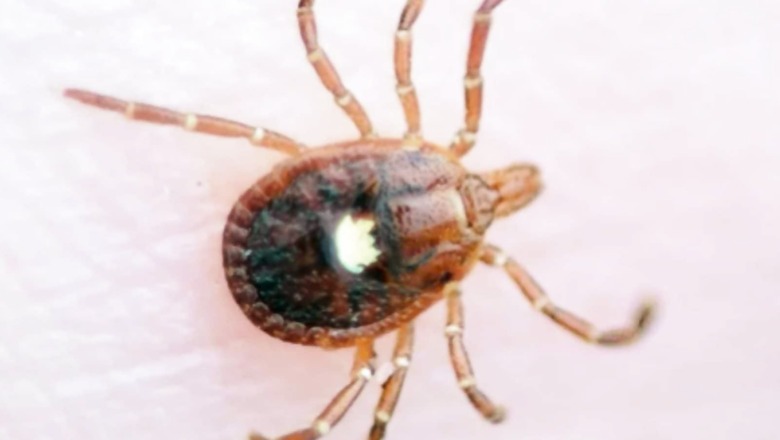
views
At least six states in the US have reported a rare tick-borne virus that has the potential to kill adults with any preexisting ailment, causing panic. The Heartland virus is circulating in Georgia in the lone star tick—a type of tick common in Eastern and Southeastern US states.
In severe cases of the Heartland virus, patients have required hospitalization. Even though the fatality rate has been low with patients mostly recovering, a few older individuals with medical conditions have died, the Centers for Disease Control and Prevention reported.
The Heartland virus in humans was first found reported back in 2009 in Missouri, according to the CDC. Quickly, the number moved to 50 between 2009 and January 2021 in 11 Midwestern and Southern states: Arkansas, Georgia, Illinois, Indiana, Iowa, Kansas, Kentucky, Missouri, North Carolina, Oklahoma, and Tennessee, the Self reported.
The spread of this virus necessitated research based on test samples to shed more light on it. Researchers in Emory University found out that lone star ticks in Georgia had picked up the Heartland virus. The report was published in the ‘Emerging Infectious Diseases’ publication.
A team of researchers began their study after a retroactive analysis of a 2005 death in Georgia was found to be caused due to the Heartland virus.
“Heartland is an emerging infectious disease that is not well understood,” Gonzalo Vazquez-Prokopec, PhD, associate professor in Emory’s Department of Environmental Sciences and senior author of the study, said in a press release.
“We’re trying to get ahead of this virus by learning everything that we can about it before it potentially becomes a bigger problem,” he added.
Signs and Symptoms of the Tick-borne Heartland Virus
The primary symptoms include fever, fatigue, reduced appetite, headache, nausea, diarrhea, and muscle or joint pain.
According to the CDC, many of these symptoms overlap with other tick-borne diseases, like ehrlichiosis. The patients usually begin to show low white blood cell counts and platelet counts, and/or higher levels of liver enzymes.
The symptoms, which can begin up to two weeks after a person is bitten, often lead to hospitalisation, the CDC said.
What is the Testing Process
So far, there is no routine testing available for the virus, however, a doctor can get in touch with the state health department if he suspects a patient has been infected by the Heartland virus. The state can then report the case to the CDC, which is able to carry out molecular and serologic tests, which can detect Heartland virus RNA and certain antibodies the body may produce in response.
How the Study Was Conducted
For the study, researchers sampled the lone star tick populations in rural areas in southeast of Atlanta, which is mainly a wildlife refuge, in 2018 and 2019. The sample area was chosen based on its location, which is close to the only confirmed case of the Heartland virus within the state. Meanwhile, data showed that a number of white-tailed deer in the area had antibodies to the virus, indicating infection.
The researchers then captured 9,294 lone star ticks in total, following which gene sequencing was performed in batches to detect the virus. The Heartland virus was confirmed in two pools of samples. The overall data meanwhile indicated a local infection rate of almost 1 in 2,000 lone star ticks.
According to the CDC, Lone star ticks are comparatively more aggressive, and their bites can cause rash and irritation. Besides, they can also transmit various tick-borne illnesses to humans and animals, like dogs.
Speaking to Newsweek, Dr. Vazquez-Prokopec threw light on the aim of the research, which he said was “to begin providing important bits of this complex puzzle”. “As it happens with many emerging infectious diseases, there is no clear understanding of the entire transmission cycle; which ticks are the vectors, what animals serve as reservoirs—small mammals? birds?—or how it persists in nature from year to year,” he explained.
The team now plans to collect and test ticks throughout the state of Georgia to understand the spread of the virus across the tick population and to humans, along with, what environmental factors may foster the population.
Read the Latest News and Breaking News here




















Comments
0 comment